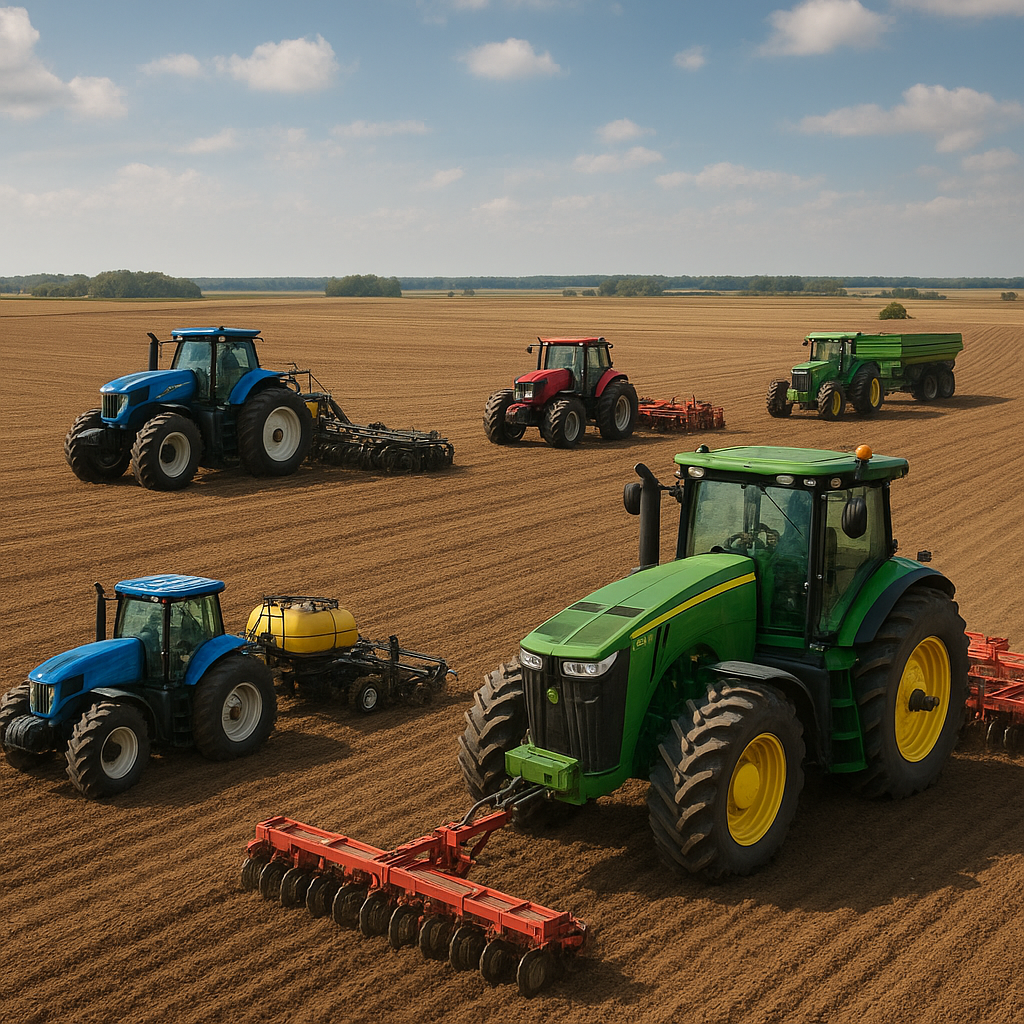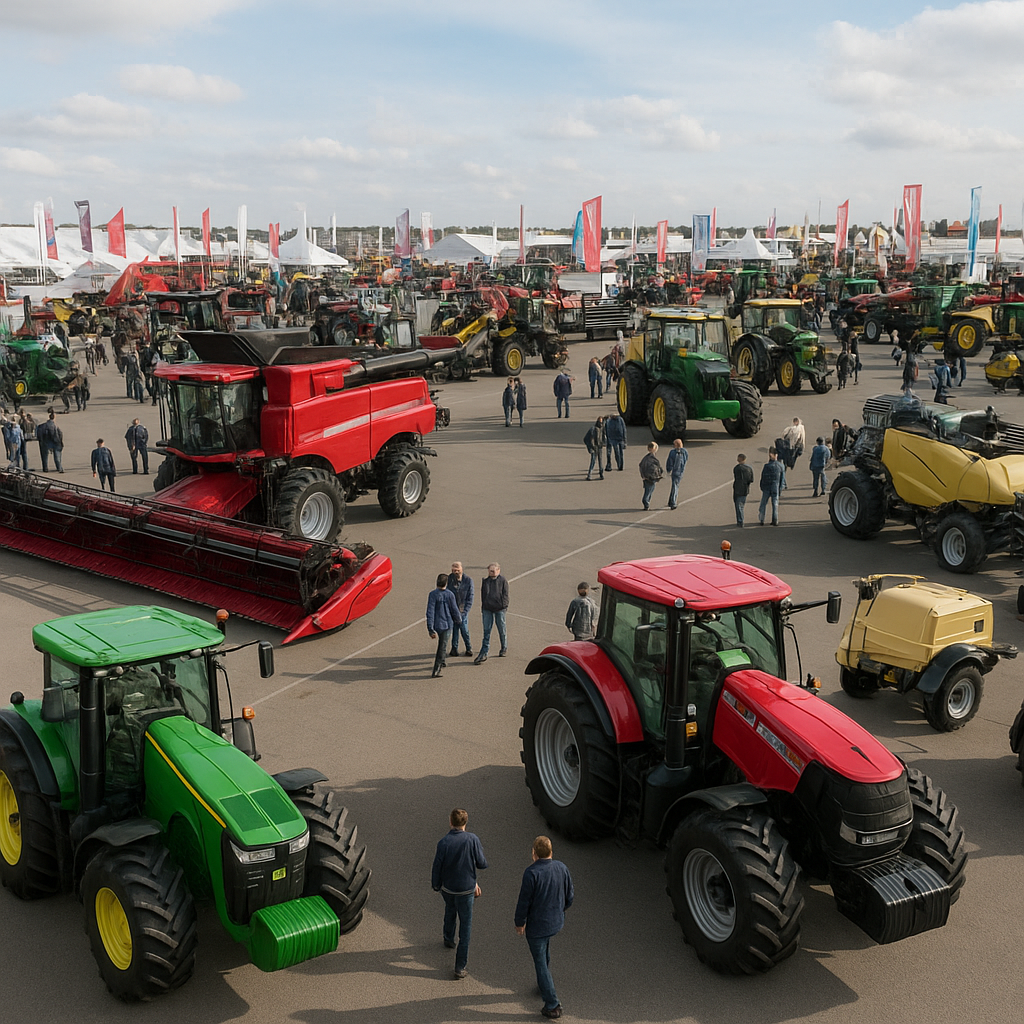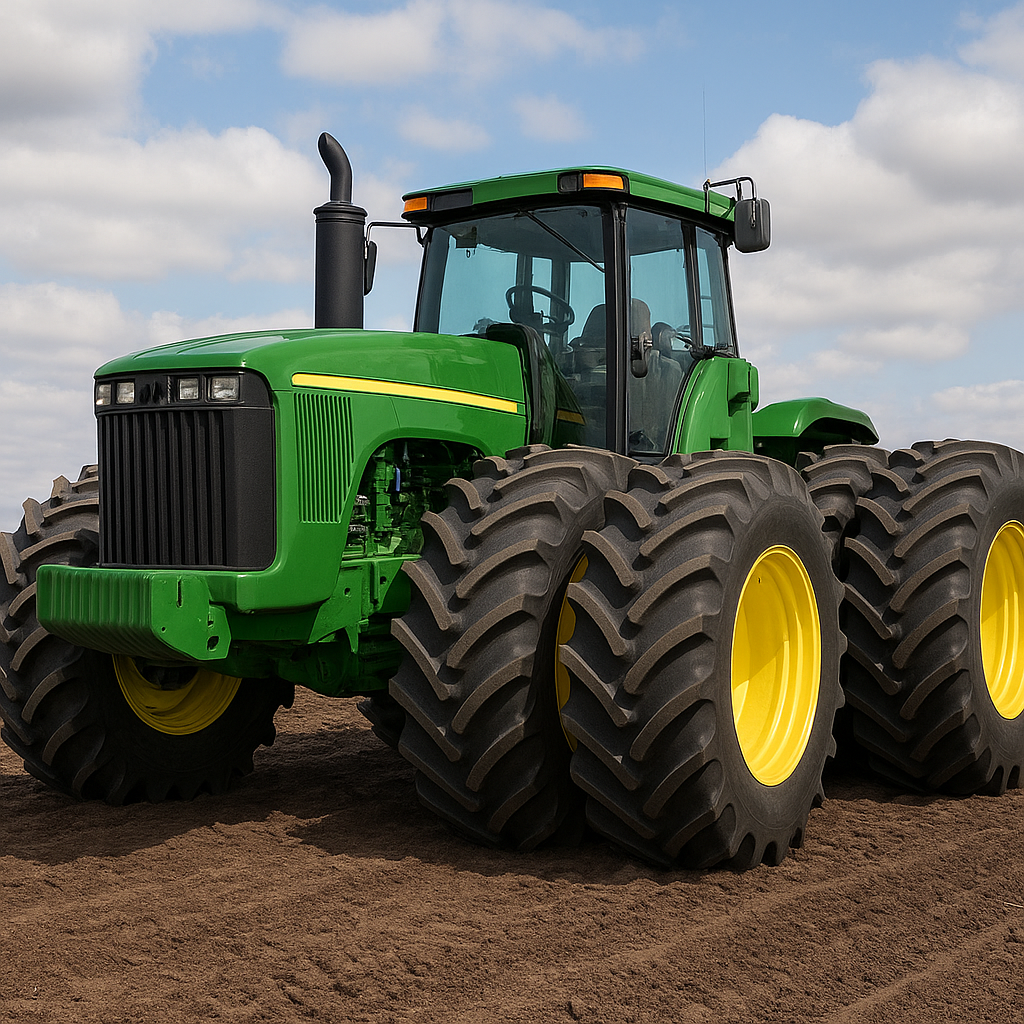Tractors are indispensable machines in modern agriculture, and the biggest tractors are marvels of engineering that push the boundaries of power, efficiency, and versatility. These colossal machines are designed to handle the most demanding tasks on large-scale farms, construction sites, and other heavy-duty applications. In this article, we will explore the world of the biggest tractors, delving into their features, capabilities, and the impact they have on various industries.
The Evolution of Tractors
The history of tractors dates back to the late 19th century when steam-powered engines were first used to pull plows and other agricultural implements. These early machines were cumbersome and inefficient, but they laid the groundwork for the development of more advanced tractors. The introduction of internal combustion engines in the early 20th century revolutionized tractor design, making them more powerful, reliable, and versatile.
As technology advanced, so did the size and capabilities of tractors. The post-World War II era saw significant improvements in tractor design, with the introduction of diesel engines, hydraulic systems, and four-wheel drive. These innovations allowed tractors to handle larger implements and perform a wider range of tasks, from plowing and planting to harvesting and hauling.
In recent decades, the demand for bigger and more powerful tractors has grown, driven by the need to increase agricultural productivity and efficiency. Today’s biggest tractors are equipped with cutting-edge technology, including GPS guidance systems, telematics, and advanced engine management systems. These machines are capable of delivering immense power and torque, enabling them to tackle the toughest jobs with ease.
Features of the Biggest Tractors
The biggest tractors are distinguished by their impressive size, power, and advanced features. Here are some of the key characteristics that set them apart:
Engine Power
The heart of any tractor is its engine, and the biggest tractors are equipped with some of the most powerful engines in the industry. These engines can produce over 600 horsepower, providing the necessary muscle to handle large implements and heavy loads. Advanced engine management systems ensure optimal performance and fuel efficiency, while reducing emissions to meet stringent environmental standards.
Hydraulic Systems
Hydraulic systems play a crucial role in the operation of modern tractors, providing the power needed to lift and control heavy implements. The biggest tractors are equipped with high-capacity hydraulic systems that deliver exceptional lifting power and precise control. These systems are essential for tasks such as plowing, planting, and harvesting, where precise implement control is critical for achieving optimal results.
Four-Wheel Drive
Four-wheel drive is a standard feature on the biggest tractors, providing superior traction and stability on challenging terrain. This capability is particularly important for tasks such as plowing and tilling, where maintaining traction is essential for efficient operation. Four-wheel drive also enhances the tractor’s ability to handle heavy loads, making it a versatile tool for a wide range of applications.
Advanced Technology
The biggest tractors are equipped with a host of advanced technologies that enhance their performance, efficiency, and ease of use. GPS guidance systems enable precise navigation and implement control, reducing overlap and improving productivity. Telematics systems provide real-time data on the tractor’s performance and condition, allowing operators to monitor and optimize their operations. Other advanced features, such as automated steering and implement control, further enhance the tractor’s capabilities and ease of use.
Applications of the Biggest Tractors
The biggest tractors are designed to handle the most demanding tasks in a variety of industries. Here are some of the key applications where these machines excel:
Agriculture
Agriculture is the primary industry where the biggest tractors are used. These machines are essential for large-scale farming operations, where they are used for tasks such as plowing, planting, and harvesting. The immense power and versatility of the biggest tractors enable them to handle large implements and cover vast areas of land quickly and efficiently. This capability is critical for maximizing productivity and ensuring timely completion of agricultural tasks.
Construction
The construction industry also benefits from the capabilities of the biggest tractors. These machines are used for tasks such as earthmoving, grading, and hauling heavy materials. The power and stability of the biggest tractors make them ideal for handling the challenging conditions often encountered on construction sites. Additionally, their advanced hydraulic systems and four-wheel drive capabilities enable them to perform a wide range of tasks with precision and efficiency.
Forestry
In the forestry industry, the biggest tractors are used for tasks such as logging, land clearing, and road building. The power and durability of these machines make them well-suited for the demanding conditions of forestry work. Their advanced technology and hydraulic systems enable them to handle heavy loads and perform precise operations, making them invaluable tools for forestry professionals.
Mining
The mining industry also relies on the capabilities of the biggest tractors for tasks such as hauling, excavation, and site preparation. The immense power and durability of these machines make them ideal for handling the heavy loads and challenging conditions often encountered in mining operations. Their advanced technology and hydraulic systems enable them to perform a wide range of tasks with precision and efficiency, making them essential tools for mining professionals.
Notable Examples of the Biggest Tractors
Several manufacturers produce some of the biggest and most powerful tractors in the world. Here are a few notable examples:
John Deere 9RX Series
The John Deere 9RX Series is one of the most powerful and advanced tractor lines on the market. These tractors are equipped with engines that produce up to 620 horsepower, providing the muscle needed to handle the largest implements and toughest tasks. The 9RX Series also features advanced technology, including GPS guidance, telematics, and automated steering, making them some of the most capable and efficient tractors available.
Case IH Steiger Quadtrac
The Case IH Steiger Quadtrac is another example of a powerful and versatile tractor. With engines that produce up to 620 horsepower, the Quadtrac is designed to handle the most demanding tasks in agriculture, construction, and other industries. The Quadtrac’s unique four-track design provides superior traction and stability, making it ideal for challenging terrain and heavy loads. Advanced technology, such as GPS guidance and telematics, further enhances the Quadtrac’s capabilities and efficiency.
New Holland T9 Series
The New Holland T9 Series is known for its power, versatility, and advanced features. These tractors are equipped with engines that produce up to 620 horsepower, providing the necessary power for large-scale farming and other heavy-duty applications. The T9 Series also features advanced technology, including GPS guidance, telematics, and automated steering, making them some of the most capable and efficient tractors on the market.
The Future of the Biggest Tractors
The future of the biggest tractors is likely to be shaped by ongoing advancements in technology and a growing emphasis on sustainability. Here are some trends and developments that may influence the future of these machines:
Electrification
As the push for sustainability and reduced emissions continues, electrification is likely to play a significant role in the future of the biggest tractors. Electric and hybrid-electric tractors have the potential to deliver the same power and performance as traditional diesel-powered machines, while reducing emissions and operating costs. Advances in battery technology and electric drivetrains will be key to making this transition possible.
Automation
Automation is another trend that is likely to shape the future of the biggest tractors. Autonomous tractors have the potential to revolutionize agriculture and other industries by increasing efficiency, reducing labor costs, and improving precision. Advances in artificial intelligence, machine learning, and sensor technology will be critical to the development and deployment of fully autonomous tractors.
Data-Driven Agriculture
The integration of data and analytics into tractor operations is likely to become increasingly important in the future. Telematics and other data-driven technologies enable operators to monitor and optimize their operations in real-time, improving efficiency and productivity. The use of data and analytics will also play a key role in precision agriculture, enabling farmers to make more informed decisions and achieve better results.
In conclusion, the biggest tractors are remarkable machines that play a crucial role in modern agriculture, construction, forestry, and mining. Their immense power, advanced technology, and versatility make them indispensable tools for a wide range of applications. As technology continues to advance, the future of the biggest tractors is likely to be shaped by trends such as electrification, automation, and data-driven agriculture, ensuring that these machines remain at the forefront of innovation and efficiency.









